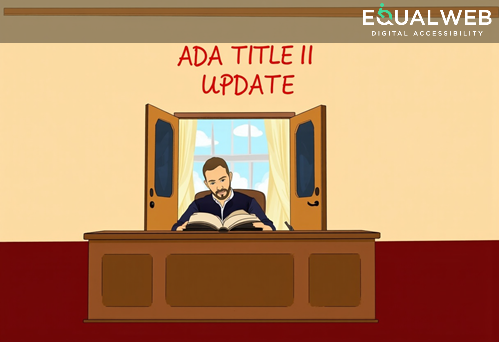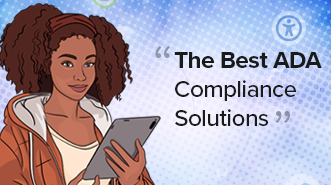Conducting an Accessibility Audit
A key step in achieving WCAG compliance is performing a comprehensive accessibility audit. Automated testing tools such as WAVE, our Accessibility Checker, and Google Lighthouse help identify glaring accessibility issues, but they are not sufficient on their own. To ensure full compliance, manual testing and real-user evaluations must be incorporated. This includes involving individuals with disabilities to assess usability and navigation from their perspective, ensuring that the website is truly accessible in practical use.
Ensuring Keyboard Navigation
One of the most critical aspects of accessibility is keyboard navigation. Websites must be fully functional for users who rely solely on keyboards. This means ensuring that all interactive elements, such as links, buttons, and forms, can be accessed using the Tab key. A clear and visible focus indicator should always be present, allowing users to track their navigation across the page. Neglecting this aspect creates significant usability barriers for individuals who cannot use a mouse or other pointing device.
Using Alternative Text for Images
Another essential consideration is the use of alternative text for images. Non-decorative images must include clear and meaningful alt text to describe their content effectively. This allows screen readers to convey the information to users with visual impairments. Decorative images should use an empty alt attribute (alt=""), while informative images should have descriptions that provide meaningful context rather than generic phrases like “image123.jpg” or “photo.”
Maintaining Proper Color Contrast
Color contrast is another common accessibility issue that affects users with visual impairments. The text-to-background contrast ratio must meet WCAG standards, with at least 4.5:1 for normal text and 3:1 for larger text. Avoid using color alone to convey information, such as “Click the red button,” to ensure that users who are colorblind or visually impaired can still understand and navigate the content effectively.
Making Multimedia Content Accessible
For websites with multimedia content, accessibility is crucial. All videos should include closed captions to accommodate users who are deaf or hard of hearing. Additionally, transcripts must be provided for audio content to ensure that information is accessible in multiple formats. In certain cases, sign language interpretation may also be necessary to maximize inclusivity for all users.
Improving Form Accessibility
Forms are a critical interactive element of many websites, and form accessibility must be a priority. All form fields should be clearly labeled with proper HTML labels, ensuring compatibility with screen readers. Error messages should be descriptive and instructive, guiding users on how to correct their input rather than displaying vague messages such as “Invalid entry.” Implementing ARIA attributes where necessary further enhances the accessibility of complex forms.
Enhancing Screen Reader Compatibility
Screen reader compatibility is a key factor in accessibility compliance. Proper use of semantic HTML ensures that screen readers can interpret the page structure correctly. This includes using appropriate heading levels, lists, and tables. Additionally, ARIA landmarks should be used to improve navigation, and websites should be designed without empty links or buttons that could confuse screen reader users.
Ensuring Mobile Accessibility
As mobile browsing continues to grow, mobile accessibility cannot be overlooked. Websites must be fully responsive and adaptable to different screen sizes and devices. Touch-friendly controls with sufficient spacing help users who navigate via touchscreen, and alternative input methods such as voice commands should also be supported. Ensuring mobile accessibility allows all users, regardless of their preferred device, to interact seamlessly with digital content.
Ongoing Accessibility Monitoring
Maintaining ongoing accessibility monitoring is essential. Achieving WCAG compliance is not a one-time effort but a continuous process that requires regular accessibility audits, training for development teams, and integrating accessibility measures into the overall web development cycle. Businesses should conduct evaluations on a quarterly or biannual basis to ensure compliance remains intact as the website evolves.
Conclusion
By implementing these essential steps, organizations can create an inclusive digital environment that enhances usability for all users while safeguarding against legal risks. Adhering to WCAG 2.2 standards ensures a more equitable internet, benefiting both users with disabilities and the businesses that serve them.
For expert guidance in achieving WCAG compliance, we offer comprehensive solutions tailored to
your website’s accessibility needs.
Contact us today to ensure full compliance and create a seamless user experience for all visitors.




